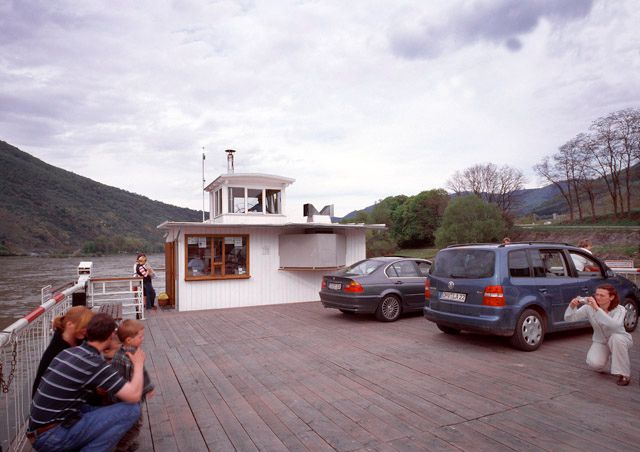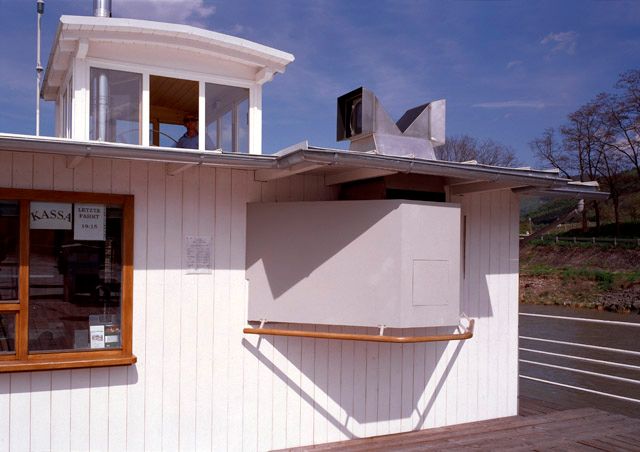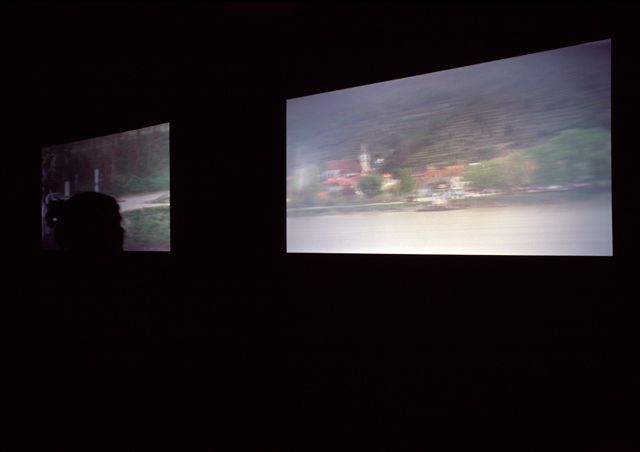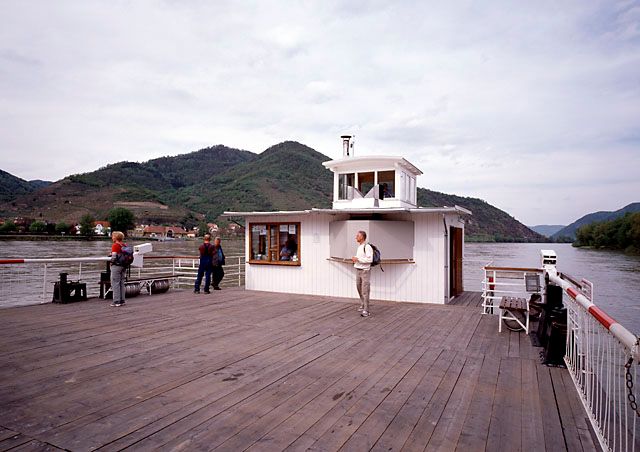Olafur Eliasson
:
Camera obscura
Back
Information
Olafur Eliasson has installed the Camera Obscura for the Danube in the cabin of the ferry to show a moving image of the passing riverside landscape in the Wachau. The existing countryside is projected as an analogue image onto two screens inside the darkened space by an arrangement of lenses and mirrors.
The Camera obscura for the Danube by Olafur Eliasson was installed on the Spitz-Arnsdorf reaction ferry to mark the entry of the Wachau region into the UNESCO list of World Cultural Heritage Sites in 2004. The work of the Danish artist combines scientific research and complex technological experiments with an all too lyrical attentiveness for the elements and the relationship between people and nature. Eliasson's artwork is neither sculpture nor image, it is a situation: the viewers are at the focus, the vehicle becomes a stage for seeing. The artist has built a touring cinema in the ferry's small cabin. The film on show is reality. The whole space is a camera obscura, a darkroom, where one spends time to experience a phenomenon that was even familiar to Aristotle: Light falling through a small aperture in a darkened space creates a back to front upside-down image on the opposite surface. Eliasson has upgraded the elementary principle of a hole with a system of lenses and mirrors. The world outside pours inside onto two monitors. Like a film, the movement of the ferry on the river generates a moving image of the riverscape around it. Crossing the Danube becomes an intense experience, and creates new relationships between the people and their rural surroundings.
(Brigitte Huck)
Images (5)






